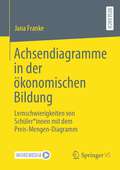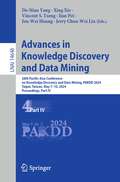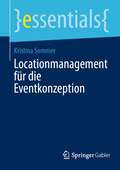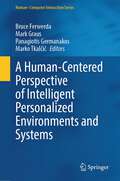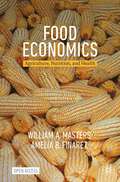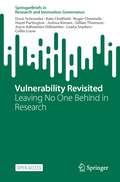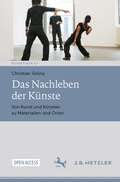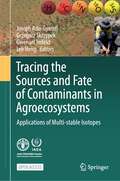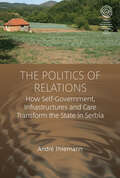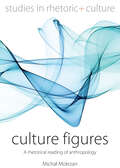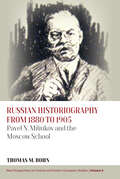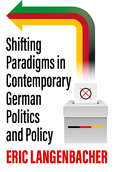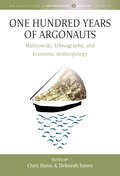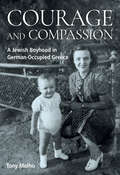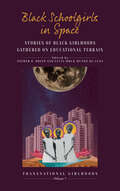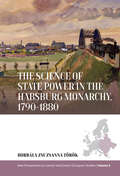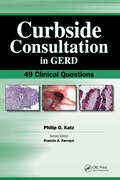- Table View
- List View
Achsendiagramme in der ökonomischen Bildung: Lernschwierigkeiten von Schüler*innen mit dem Preis-Mengen-Diagramm
by Jana FrankeÖkonomische Modelle werden durch bewusste Reduktion der Komplexität des Betrachteten mit dem Ziel des Erkenntnisgewinns entwickelt. Mithilfe von mathematischen Modellierungen können ökonomische Modelle exakter gefasst werden. Dieses Resultat ist ein wichtiges Werkzeug bei der Ermittlung und Darstellung von Systemzusammenhängen. Durch die Visualisierung der mathematischen Modellierungen mit dem Achsendiagramm werden abstrakte Zusammenhänge erkennbar und diskutierbar. Deshalb finden ökonomische Achsendiagramme in der Schule unter anderem als Hilfsmittel zur systematischen Betrachtung einzelner Einflussfaktoren eines komplexen Interaktionssystems, wie beispielsweise der Preisbildung auf Märkten, Einsatz. Die Visualisierung des ökonomischen Modells der Preisbildung auf Märkten mithilfe des Preis-Mengen-Diagramms kann dabei die ökonomischen Verständnisprozesse fördern, sie aber auch behindern. Inwieweit das Preis-Mengen-Diagramm somit Hilfsmittel und Hürde im Wirtschaftsunterricht darstellt, wird in diesem Buch untersucht. Dafür werden Lernschwierigkeiten von Schüler*innen beim Umgang mit und dem Wissen über die mathematische Modellierung des ökonomischen Modells der Preisbildung im vollkommenen Markt und dessen Visualisierung durch das Preis-Mengen-Diagramm identifiziert. Darauf aufbauend werden Implikationen für den Wirtschaftsunterricht abgeleitet.
Advances in Knowledge Discovery and Data Mining: 28th Pacific-Asia Conference on Knowledge Discovery and Data Mining, PAKDD 2024, Taipei, Taiwan, May 7–10, 2024, Proceedings, Part IV (Lecture Notes in Computer Science #14648)
by Vincent S. Tseng Jerry Chun-Wei Lin Xing Xie Jian Pei De-Nian Yang Jen-Wei HuangThe 6-volume set LNAI 14645-14650 constitutes the proceedings of the 28th Pacific-Asia Conference on Knowledge Discovery and Data Mining, PAKDD 2024, which took place in Taipei, Taiwan, during May 7–10, 2024. The 177 papers presented in these proceedings were carefully reviewed and selected from 720 submissions. They deal with new ideas, original research results, and practical development experiences from all KDD related areas, including data mining, data warehousing, machine learning, artificial intelligence, databases, statistics, knowledge engineering, big data technologies, and foundations.
Locationmanagement für die Eventkonzeption (essentials)
by Kristina SommerDieses essential ist ein praxisorientierter Leitfaden für das Eventmanagement und hilft Ihnen bei der Auswahl der richtigen Location. Nicht nur bei Hochzeiten wird viel Zeit darauf verwendet, die passende Location zu finden. Der Raum ist bei jedem Event von zentraler Bedeutung, denn es grenzt diesen von seinem Umfeld ab und gibt die Gestaltung vor – sei es im Innenraum oder unter freiem Himmel. Erst mit der zielgerichteten Vorbereitung und dem richtigen Verständnis wird der Raum zum Teil der Eventinszenierung. Es ist daher erstaunlich, dass es in der deutschsprachigen Literatur zum Eventmanagement kaum umfassende Betrachtungen zur Location gibt. Das Buch schließt diese Lücke.
A Human-Centered Perspective of Intelligent Personalized Environments and Systems (Human–Computer Interaction Series)
by Marko Tkalčič Panagiotis Germanakos Bruce Ferwerda Mark GrausThis book investigates the potential of combining the more quantitative - data-driven techniques with the more qualitative - theory-driven approaches towards the design of user-centred intelligent systems. It seeks to explore the potential of incorporating factors grounded in psychological theory into adaptive/intelligent routines, mechanisms, technologies and innovations. It highlights models, methods and tools that are emerging from their convergence along with challenges and lessons learned. Special emphasis is placed on promoting original insights and paradigms with respect to latest technologies, current research trends, and innovation directions, e.g., incorporating variables derived from psychological theory and individual differences in adaptive intelligent systems so as to increase explainability, fairness, and transparency, and decrease bias during interactions while the control remains with the user.
Food Economics: Agriculture, Nutrition, and Health (Palgrave Studies in Agricultural Economics and Food Policy)
by William A. Masters Amelia B. FinaretFood Economics provides a unified introduction to the economics of agricultural production, business decisions, consumer behavior, and the government policies that shape our food system. This open access textbook begins with economic principles derived using graphical techniques to explain and predict observed prices, quantities, and other outcomes as a result of individual choices influenced by market structure and public policies. The second half of the book explores available data globally and for the US, covering a wide range of questions in agriculture and economic development, food marketing, and consumption. Food Economics and its accompanying online resources are designed for advanced undergraduate or introductory graduate courses in agriculture, food, and nutrition policy. The book covers the standard diagrams taught in principles-level courses, with concrete examples and practical insights regarding food production, consumption, and trade. Online resources include data sources, and course materials, including slides, exercises, exams, and answer keys.
Vulnerability Revisited: Leaving No One Behind in Research (SpringerBriefs in Research and Innovation Governance)
by Doris Schroeder Roger Chennells Kate Chatfield Hazel Partington Joshua Kimani Gillian Thomson Joyce Adhiambo Odhiambo Leana Snyders Collin LouwOpen access. This open-access book discusses vulnerability and the protection-inclusion dilemma of including those who suffer from serious poverty, severe stigma, and structural violence in research. Co-written with representatives from indigenous peoples in South Africa and sex workers in Nairobi, the authors come down firmly on the side of inclusion. In the spirit of leaving no one behind in research, the team experimented with data collection methods that prioritize research participant needs over researcher needs. This involved foregoing the collection of personal data and community researchers being involved in all stages of the research. In the process, the term ‘vulnerability’ was illuminated across significant language barriers as it was defined by indigenous peoples and sex workers themselves. The book describes a potential alternative to exclusion from research that moves away from traditional research methods. By ensuring that the research is led by vulnerable groups for vulnerable groups, it offers an approach that fosters trust and collaboration with benefits for the community researchers, the wider community as well as research academics. Those living in low-income settings, in dire situations that are summarized with the term ‘vulnerability’ know best what their problems are and which priorities they have. To exclude them from research for their own protection is a patronizing approach which insinuates that researchers and research ethics committees know best. The team from this book have shown that minimally risky and minimally burdensome research tailored towards the needs of highly marginalized and stigmatized communities can be scientifically valuable as well as inclusive and equitable. I congratulate them. Prof. Klaus Leisinger, President Global Values Alliance, Former personal advisor to Kofi Annan on corporate responsibility
Das Nachleben der Künste: Von Kunst und Künsten zu Materialien und Orten (Ästhetiken X.0 – Zeitgenössische Konturen ästhetischen Denkens)
by Christian GrünyDie künstlerische Produktion der Gegenwart ist äußerst divers und kaum mehr auf klare Kategorien festlegbar. Es ist eine geläufige Diagnose, dass sich Disziplinengrenzen auflösen und dass letztlich alles in einer Kunst im Singular aufgeht. Das Buch vertritt die These, dass bei allen Überschreitungs- und Hybridisierungsbewegungen disziplinäre Logiken weiterhin bedeutsam sind und dass die Begriffe der Kunst im Singular und der Künste im Plural nur schlecht geeignet sind, diese Situation zu beschreiben: Sie unterschätzen die Heterogenität der künstlerischen Arbeiten bzw. suggerieren, die verschiedenen Disziplinen ließen sich sauber nebeneinander sortieren und folgten im Großen und Ganzen derselben Logik, was offensichtlich nicht der Fall ist. Als alternative Beschreibungsmöglichkeiten werden die Begriffe des Materials und des Ortes angeboten, mit denen jeweils konkrete, aber systematisch verankerte Analysen an die Stelle klarer Kategorisierungen gesetzt werden. Der Begriff des künstlerischen Materials wird von Theodor W. Adorno übernommen, aber flexibilisiert: Er ist produktiv darin, dass er die innere Historizität von Kunstwerken zu denken erlaubt und sie auf Vorläufer und Traditionslinien beziehbar macht. Er muss allerdings von der Vorstellung eines klaren Fortschritts befreit und von der Fixierung auf einzelne, getrennte Disziplinen gelöst werden. Mit dem Begriff des Ortes wird der disziplinären, architektonischen, institutionellen und geopolitischen Situierung künstlerischer Arbeiten Rechnung getragen. Die beiden Begriffe funktionieren komplementär, indem sie Materiallinien auch über Grenzen hinweg verfolgbar und die Interferenzen beschreibbar machen, die sich bei Ortswechseln ergeben.Dies ist ein Open-Access-Buch.
Tracing the Sources and Fate of Contaminants in Agroecosystems: Applications of Multi-stable Isotopes
by Lee Heng Joseph Adu-Gyamfi Grzegorz Skrzypek Gwenaël ImfeldThe objective of this open access book is to present protocols, methodologies, and standard operating procedures (SOPs) used for the identification of sources, transport, and fate of agro-contaminants and illustrate them with several case studies of successful applications. The Soil and Water Management & Crop Nutrition (SWMCN) Subprogramme of the Joint Food and Agriculture Organization (FAO)/International Atomic Energy Agency (IAEA) Centre of Nuclear Techniques in Food and Agriculture, through a Coordinated Research Project (CRP) in partnership with national and international research institutes, developed and evaluated a set of analytical techniques (the toolbox). The toolbox integrates multiple isotope tracers that provide information on the origins and pathways of multiple pollutants through agro-ecosystems, thereby providing more accurate guidance on mitigations. However, land management strategies to address and control the transport of pollutants from soil to water bodies remain the shared responsibility of farm and aquaculture operators, agro-chemical manufacturers, and policymakers in food and agriculture as well as the mining sectors. This book is structured into eight chapters covering (i) an overview of the book’s content, (ii) guidelines for designing water sampling programmes, (iii) the use of mixing models applicable to tracers for water pollution studies, (iv) compound-specific isotope analyses to investigate pesticide degradation in agricultural catchments, (v) the use of stable oxygen isotope composition of phosphate to investigate phosphorous in soil-plant continuum, (vi) the use of stable sulphur isotopes to disentangle agro-pollutants from other contaminants, (vii) nuclear tools used in sediment source apportionment, and (viii) the conclusions and perspectives forward. The book offers up-to-date information, and we hope it is a great source of information for students, researchers, and policymakers. The SWMCN subprogramme thanks all the contributors involved in the preparation of this publication.
The Politics of Relations: How Self-Government, Infrastructures, and Care Transform the State in Serbia (EASA Series #49)
by André ThiemannRethinking the contributions of the Manchester School of Social Anthropology for political ethnography, the Politics of Relations elaborates its relational approach to the state along four interlaced axes of research – embeddedness, boundary work, modalities and strategic selectivity – that enable thick comparisons across spatio-temporal scales of power. In Serbia local experiences of self-government, infrastructure and care motivate its citizens to “become the state” while cursing it heartily. While both officials and citizens strive for a state that enables a “normal life,” they navigate the increasingly illiberal politics enacted by national parties and which are tolerated by trans-national donors.
Culture Figures: A Rhetorical Reading of Anthropology (Studies in Rhetoric and Culture #10)
by Michał MokrzanEthnographic research, anthropological theory, and the understanding of the objects of inquiry, are co-created through figuration (using tropes and rhetorical figures) and techniques of persuasion. Delving into descriptive ethnography and theoretical texts spanning across classical monographs and recent texts in cultural anthropology, Culture Figures places rhetoric and rhetoricity as central to the discipline’s self-understanding. It focuses on how understandings of ‘culture’ and social life are shaped and conveyed in cultural anthropology through textual rhetoric. The book demonstrates how processes of using tropes and modes of persuasion underlie the creation of meanings or misunderstandings in society.
Russian Historiography from 1880 to 1905: Pavel N. Miliukov and the Moscow School (New Perspectives on Central and Eastern European Studies #6)
by Thomas M. BohnIn Russian historiography, the Moscow School’s paradigm shift from political and legal history to social and economic history was markedly driven by Pavel Miliukov (1859-1943), the late leader of the Constitutional Democrats and foreign minister of the Provisional Government. Russian Historiography from 1880 to 1905 develops a narrative of historical sociology’s advancement through the Moscow School under Miliukov’s influence and provides a window into his decision making as a political figure who based his leadership not on public opinion but on the effectiveness of historical processes.
Shifting Paradigms in Contemporary German Politics and Policy
by Eric LangenbacherGermany has undergone more change in the past two years than it has experienced in decades. In the fall of 2021, the Social Democratic Party unexpectedly surged to first place in the Bundestag elections, going on to lead a coalition of SPD, Greens, and Free Democrats that promised to “dare more progress” domestically. Then just two months after the new government was installed, Russia invaded Ukraine. The contributions in this volume investigate the altered state of German politics and predict the trajectory of Europe’s leading power in the transformed geopolitical environment.
Rest in Plastic: Death, Time and Synthetic Materials in a Ghanaian Ewe Community (Material Mediations: People and Things in a World of Movement #14)
by Isabel BredenbrökerIn Peki, an Ewe town in the Ghanaian Volta Region, death is a matter of public concern. By means of funeral banners printed with synthetic ink on PVC, public lyings in state, cemented graves and wreaths made from plastic, death occupies a prominent place in the world of the living. Rest in Plastic gives an insight into local entanglements of death, synthetic materials and power in Ewe community. It shows how different materials and things that come to shape power relations, exist in a delicate balance between state and local governance, kin and outsiders, death and life, the invisible and the visible, movement and containment.
One Hundred Years of Argonauts: Malinowski, Ethnography and Economic Anthropology (Max Planck Studies in Anthropology and Economy #13)
by Chris Hann and Deborah JamesMalinowski’s Argonauts of the Western Pacific was a major contribution to anthropological theory and method, while simultaneously establishing the sub-field of economic anthropology. Even a century after its publication, Malinowski’s pioneering work remains critical for anthropology in a postcolonial age. This volume uses ethnographic studies from around the world to contextualize the work politically and intellectually, examining its gestation and influence from multiple perspectives. It critically explores the meaning of “economy” for Malinowski from his formation in the Austro-Hungarian Empire to his path-breaking fieldwork in Melanesia and ensuing career in London.
Courage and Compassion: A Jewish Boyhood in German-Occupied Greece
by Tony MolhoFirst published in Greek in 2023. The Greek edition was awarded the OURANIS PRIZE of the Academy of Athens In this extraordinary personal account of childhood and survival during the Holocaust, Professor Tony (Antony) Molho recounts his adventures in 1940s Greece from ages four to six, as his parents risked everything to hide him from the German occupiers. In doing so he pays homage to the many ordinary people who selflessly protected his family, demonstrating that even in the darkest times the self-sacrifice and kindness of modest people can still prevail. Delving into the power of memory, and exploring questions of personal identity, and the weight of the Shoah, Courage and Compassion goes beyond the bounds of conventional memoir, as Tony Molho also reflects on the nature of Jewish identity in the aftermath of the Holocaust and on how his personal awareness of this trauma has helped him to understand the course of his own life.
Black Schoolgirls in Space: Stories of Black Girlhoods Gathered on Educational Terrain (Transnational Girlhoods #7)
by Esther O. Ohito and Lucía Mock Muñoz de LunaLocating Black girls’ desires, needs, knowledge bases, and lived experiences in relation to their social identities has become increasingly important in the study of transnational girlhoods. Black Schoolgirls in Space pushes this discourse even further by exploring how Black girls negotiate and navigate borders of blackness, gender, and girlhood in educational spaces. The contributors of this collected volume highlight Black girls as actors and agents of not only girlhood but also the larger, transnational educational worlds in which their girlhoods are contained.
The Science of State Power in the Habsburg Monarchy, 1790-1880 (New Perspectives on Central and Eastern European Studies #5)
by Borbala Zsuzsanna TörökThe formation of modern European states during the long 19th century was a complicated process, challenged by the integration of widely different territories and populations. The Science of State Power in the Habsburg Monarchy, 1790-1880 builds on recent research to investigate the history of statistics as an overlooked part of the sciences of the state in Habsburg legal education as well as within the broader public sphere. By exploring the practices and social spaces of statistics, author Borbála Zsuzsanna Török uncovers its central role in imagining the composite Habsburg Monarchy as a modern and unified administrative space.
Biologic Knee Reconstruction: A Surgeon's Guide
by Joshua Harris Brian ColeTreatment of articular cartilage pathology in the knees of young and active patients is a challenging and controversial issue. Biologic Knee Reconstruction: A Surgeon's Guide is a how-to, step-by-step guide that addresses the evaluation and management of this unique patient population. Internationally renowned cartilage experts Dr. Brian J. Cole and Dr. Joshua D. Harris, along with their contributors, present information on normal and abnormal history and physical examination. The reader will learn proper decision-making using a patient-centered approach of treatment, increasing the likelihood of a successful outcome. In addition to radiographic assessment of articular cartilage, Biologic Knee Reconstruction discusses the use of biomarkers, defect classification, and patient-reported and surgeon-measured outcomes. Aggressive nonsurgical medical management, including medications, injections, physiotherapy, and rehabilitation, is also presented.Biologic Knee Reconstruction also discusses the management of concomitant pathologies such as malalignment, meniscal deficiency, and ligamentous instability. Selection of surgical cartilage restorative treatment options is multifactorial, requiring consideration of several patient-, knee-, and defect-specific issues. All contemporary open and arthroscopic cartilage techniques are presented in detail with high resolution figures. A unique feature of Biologic Knee Reconstruction is the presentation of several chapters discussing non-medical issues highly pertinent to the advancement and future of this field: funding of research and cost of new advanced technologies, regulation of advanced cellular, tissue, and genetic technologies, evidence-based medicine and clinical trial design and conduct, and the ethics of allograft tissues and stem cell use.Features: Technique preference cards from the experts performing cartilage surgery Patient education information The most up-to-date descriptions of advanced cartilage techniques Unique chapters not covered in books elsewhere, including: Biomarkers Patient-reported outcomes assessment Newer injection techniques (PRP, stem cells) One- and two-stage open and arthroscopic techniques using chondrocyte- and stem cell based cell therapies Costs and public and private funding of research Barriers to high-quality randomized trials Governmental regulation and availability/accessibility to patients Gene therapy and tissue engineering Ethics of articular cartilage surgery with stem cells, ex-vivo cell manipulation, and juvenile tissue sources With the most up-to-date content and step-by-step methods for surgical procedures, Biologic Knee Reconstruction: A Surgeon's Guide is the perfect addition to the bookshelf of the orthopedic surgeon, cartilage researcher, sports physical therapist, or athletic trainer who evaluates and manages this unique patient population.
Corneal Cross-Linking
by J. Bradley Randleman Farhad HafeziCorneal Cross-Linking, Second Edition represents an innovative approach to treating primary acquired and secondary induced ectatic disorders. In addition, corneal cross-linking (CXL) has promising applications as an alternative in the treatment of corneal infectious and non-infectious melting, as well as conditions such as Fuchs’ endothelial dystrophy. The new and expanded Second Edition of Corneal Cross-Linking by Drs. Farhad Hafezi and J. Bradley Randleman will provide a concise yet comprehensive summary of the CXL process, including the basic science foundations, treatment protocols and outcomes, recognition and management of potential complications, and modification of standard protocol for special circumstances. Given all the changes in this rapidly progressing field, many brief topics from the first edition have now grown into full chapters or sections. These include expanded sections on alternative treatment protocols, corneal imaging and biomechanics, combing cross-linking with other refractive treatments, and a section devoted specifically to the most highly debated controversies in the field today. With each chapter being fully updated plus including over twenty new chapters that covers the latest advances and future directions, Corneal Cross-Linking, Second Edition represents the cutting-edge of CXL research and clinical practice. “Since the publication of the first edition of this book in 2013, our knowledge of corneal cross-linking has again significantly increased, both scientifically and clinically. Today, concise recommendations (guidelines for cross-linking) help the clinician to select the patients, make decisions, and provide optimal treatment” -Eberhard Spoerl, PhD and Theo Seiler, MD, PhD
Cardiopulmonary Physical Therapy: Management and Case Studies
by W. Darlene Reid Frank Chung Kylie HillCardiopulmonary Physical Therapy: Management and Case Studies, Second Edition is a unique and succinct textbook for the classroom that blends clinical notes on assessment and management together with case-based instructional approaches to cardiopulmonary care for acute and ambulatory care patients. This one-of-a-kind text describes current approaches that cover traditional physical therapist management strategies and includes evidence-based chapters on early mobilization and exercise training on a wide range of cardiopulmonary patient groups.The updated Second Edition presents twenty-four cases that were designed to complement each chapter topic and represent the most common pulmonary, cardiac, and neurological conditions that are typically managed in cardiopulmonary care. These cases have been carefully selected and developed over several years to illustrate a spectrum of clinical issues essential for the preparation of the entry-level therapist. The very interactive nature of the case history approach is engaging and provides the opportunity to work through many of the steps of the clinical decision-making process.Cardiopulmonary Physical Therapy: Management and Case Studies, Second Edition also includes answer guides for the questions posed in the assessment and management chapters, as well as for the twenty-four cases.New in the Second Edition: Twenty-four carefully selected evidence-based cases designed to go “hand-in-hand” with chapter topics An international perspective that is relevant to physical therapy practice in several countries Detailed chapter on noninvasive ventilation and mechanical ventilation Several chapters describe early mobilization and exercise training for a range of cardiopulmonary patient groups including those admitted to an intensive care unit Faculty will benefit from the “Talk Me Through” PowerPoint slides, which provide a great opportunity for independent learning and complement classroom teaching The two-fold evidence and case-based learning approach used by Dr. W. Darlene Reid, Frank Chung, and Dr. Kylie Hill allows for a more engaging experience. The inclusion of interactive materials will allow students to learn and develop skills to prepare themselves for their professional transition while clinicians can use the text as a reference tool.
Curbside Consultation in Pediatric Sleep Disorders: 49 Clinical Questions (Curbside Consultation in Pediatrics)
by Aaron ChidekelAre you looking for concise, practical answers to those questions that are often left unanswered by traditional pediatric sleep disorder references? Are you seeking brief, evidence-based advice for complicated cases or controversial decisions? Curbside Consultation in Pediatric Sleep Disorders: 49 Clinical Questions provides quick answers to the tricky questions most commonly posed during a “curbside consultation” between pediatricians. Dr. Aaron Chidekel has designed this unique reference which offers expert advice, preferences, and opinions on tough clinical questions commonly associated with pediatric sleep disorders. The unique Q&A format provides quick access to current information related to pediatric sleep disorders with the simplicity of a conversation between two colleagues. Numerous images, diagrams, and references allow readers to browse large amounts of information in an expedited fashion.Some of the questions that are answered: Why do we sleep and what is happening when children sleep? How does sleep change from infancy to adulthood? What are the latest recommendations for safe infant sleep and the prevention of SIDS? What are some pearls or strategies to manage or even better, to prevent behavioral sleep disorders in young children? What is obstructive sleep apnea syndrome? What is narcolepsy and do children actually develop this condition? Which of my patients should have a polysomnogram? Curbside Consultation in Pediatric Sleep Disorders: 49 Clinical Questions provides information basic enough for residents while also incorporating expert advice that even high-volume pediatricians will appreciate. Pediatricians, family practitioners, and pediatric residents will benefit from the user-friendly, casual format and the expert advice contained within.
Curbside Consultation in GERD: 49 Clinical Questions (Curbside Consultation in Gastroenterology)
Are you looking for concise, practical answers to questions that are often left unanswered by traditional GERD references? Are you seeking brief, evidence-based advice for complicated cases or complications? Curbside Consultation in GERD: 49 Clinical Questions provides quick and direct answers to the thorny questions commonly posed during a “curbside consultation” between colleagues.Dr. Philip Katz has designed this unique reference, which offers expert advice, preferences, and opinions on tough clinical questions commonly associated with GERD. The unique Q&A format provides quick access to current information related to GERD with the simplicity of a conversation between two colleagues. Numerous images, diagrams, and references are included to enhance the text and to illustrate the treatment of GERD patients.Curbside Consultation in GERD: 49 Clinical Questions provides information basic enough for residents while also incorporating expert advice that even high-volume clinicians will appreciate. Gastroenterologists, fellows and residents in training, surgical attendings, and surgical residents will benefit from the user-friendly and casual format and the expert advice contained within.Some of the questions that are answered: Can medical therapy alter the natural history of Barrett’s esophagus? Can antireflux surgery alter the natural history of Barrett’s esophagus? How does pregnancy affect GERD? Is GERD in pregnancy a risk for long-term reflux? What is the association of obesity and GERD? What are the so-called extraesophageal manifestations of GERD? Is there a gender difference in reflux disease? Does this affect treatment?
Curbside Consultation in GERD: 49 Clinical Questions (Curbside Consultation in Gastroenterology)
by Philip O. KatzAre you looking for concise, practical answers to questions that are often left unanswered by traditional GERD references? Are you seeking brief, evidence-based advice for complicated cases or complications? Curbside Consultation in GERD: 49 Clinical Questions provides quick and direct answers to the thorny questions commonly posed during a “curbside consultation” between colleagues.Dr. Philip Katz has designed this unique reference, which offers expert advice, preferences, and opinions on tough clinical questions commonly associated with GERD. The unique Q&A format provides quick access to current information related to GERD with the simplicity of a conversation between two colleagues. Numerous images, diagrams, and references are included to enhance the text and to illustrate the treatment of GERD patients.Curbside Consultation in GERD: 49 Clinical Questions provides information basic enough for residents while also incorporating expert advice that even high-volume clinicians will appreciate. Gastroenterologists, fellows and residents in training, surgical attendings, and surgical residents will benefit from the user-friendly and casual format and the expert advice contained within.Some of the questions that are answered: Can medical therapy alter the natural history of Barrett’s esophagus? Can antireflux surgery alter the natural history of Barrett’s esophagus? How does pregnancy affect GERD? Is GERD in pregnancy a risk for long-term reflux? What is the association of obesity and GERD? What are the so-called extraesophageal manifestations of GERD? Is there a gender difference in reflux disease? Does this affect treatment?
Curbside Consultation in Pediatric Asthma: 49 Clinical Questions (Curbside Consultation in Pediatrics)
by Aaron ChidekelAre you looking for concise, practical answers to those questions that are often left unanswered by traditional pediatric asthma references? Are you seeking brief, evidence-based advice for complicated cases or controversial decisions? Curbside Consultation in Pediatric Asthma: 49 Clinical Questions provides quick answers to the tricky questions most commonly posed during a “curbside consultation” between pediatricians. Dr. Aaron Chidekel has designed this unique reference which offers expert advice, preferences, and opinions on tough clinical questions commonly associated with pediatric asthma. The unique Q&A format provides quick access to current information related to pediatric asthma with the simplicity of a conversation between two colleagues. Numerous images, diagrams, and references allow readers to browse large amounts of information in an expedited fashion. Some of the questions that are answered: • How is asthma diagnosed in infancy and childhood? • I am a busy pediatrician. How can I integrate effective asthma management into my practice?• What are the most current NIH asthma guidelines and what do I need to know about them?• What is an asthma action plan and how can one be individualized for my patients?• What do the parents of my patients need to know about asthma and its management?• How do I know when a patient with asthma should see a specialist?Curbside Consultation in Pediatric Asthma: 49 Clinical Questions provides information basic enough for residents while also incorporating expert advice that even high-volume pediatricians will appreciate. Pediatricians, nurse practitioners, physician assistants, and family practitioners will benefit from the user-friendly, casual format and the expert advice contained within.
The Foot and Ankle: AANA Advanced Arthroscopic Surgical Techniques (AANA Advanced Arthroscopic Techniques series)
by James Stone Mark Glazebrook Kennedy JohnCo-published with the Arthroscopy Association of North America, The Foot and Ankle: AANA Advanced Arthroscopic Surgical Techniques is a comprehensive technique-based book that presents the latest diagnostic and reconstructive techniques in arthroscopic surgery for the foot and ankle. The Foot and Ankle: AANA Advanced Arthroscopic Surgical Techniques is authored by premier arthroscopic surgeons Drs. James W. Stone, John G. Kennedy, and Mark Glazebook, and their international list of expert contributors. This comprehensive resource includes preferred physical examination testing and diagnostic imaging choices in pre-operative planning and patient selection, state-of-the-art step-by-step description of the procedures, detailed surgical equipment lists to perform each procedure, clear and precise indications for surgery and the thoughtful rationale behind stated contraindications, controversial indications, post-operative protocols, and potential complications. The written text is supported by numerous color images and a website with invaluable, narrated video clips depicting disease-specific arthroscopic techniques specific to the foot and ankle. Features inside The Foot and Ankle: AANA Advanced Arthroscopic Surgical Techniques Narrated video accompanies all surgical techniques, focusing on the stepwise approach to each operation Consistent organization throughout the book results in a bulleted and user-friendly interface for a quick reference or prolonged study Top 5 Technical Pearls for each procedure to enhance outcomes and to avoid common pitfalls and complications High-quality artwork and figures to compliment clinical images Equipment and surgical technique checklists for quick reference prior to surgery Each expert contributor was chosen for his or her expertise for a specific topic related to The Foot and Ankle, so the reader benefits by the highest quality and treatment recommendations to provide state-of-the-art care to his or her patient.Some chapter topics include:-Reconstruction Using Allograft and Autograft-Lateral Approach to Subtalar Arthroscopy-Achilles Tendinopathy-Chondral Defects of the First MTP Joint-Matrix-Induced Autologous Chondrocyte Implantation
